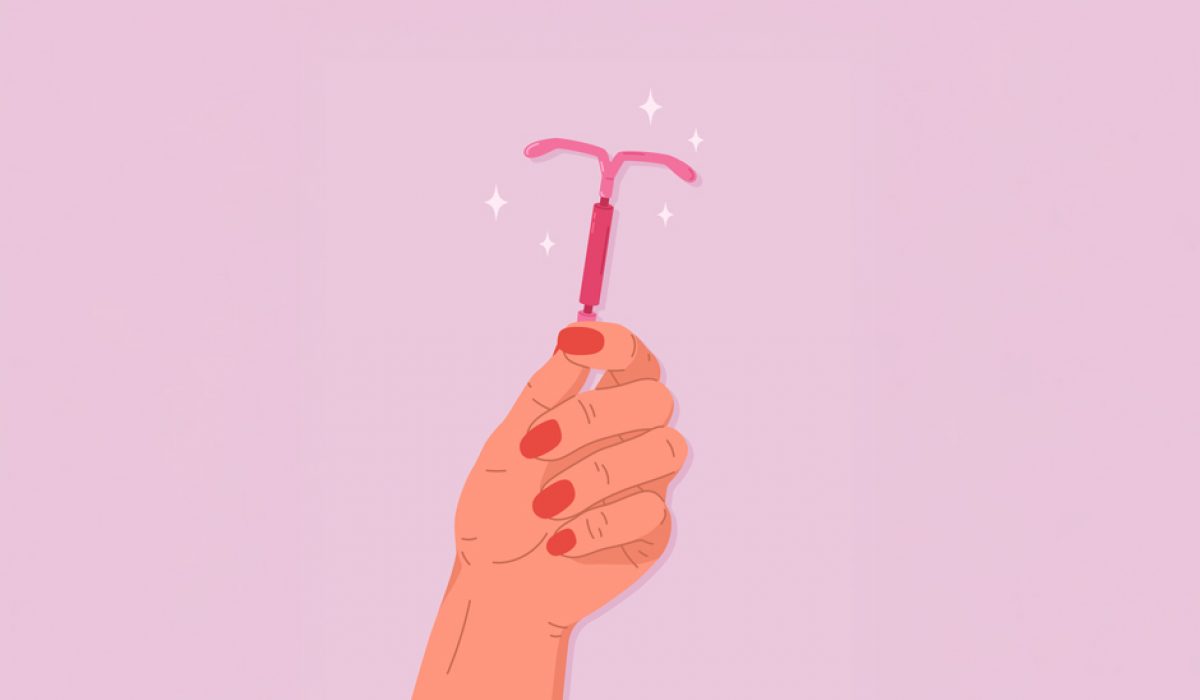Intrauterine device (IUD, also known as the ‘coil’) insertion is a routine procedure, with the IUD having been a popular form of contraception since the 1950s. Much like a smear test, it is often described by healthcare providers as a little uncomfortable, but painless. However, with conversations expanding around feminine health, many women are coming forward to report pain and discomfort during IUD insertion, and calling for more transparency and advice on how to prepare for the procedure, including increased awareness of pain relief options.
In this article, we look at IUDs and how they work, why IUD insertion can cause pain, and how pain can be reduced or prevented, with advice from Dr A Eskander, Consultant Gynaecologist and Medical Director at The Gynae Centre.
What is an IUD and how does it work?
An IUD is a small, t-shaped device that is placed inside the uterus to provide long-term contraception. There are two main types:
- Copper IUDs – these release copper ions, which are toxic to sperm. This makes it very difficult for sperm to survive and fertilise an egg.
- Hormonal IUDs – these release a small, steady amount of progestogen, which thickens cervical mucus (making it harder for sperm to reach the egg), thins the lining of the womb and sometimes prevents ovulation.
Both types are highly effective as contraception, lasting anywhere from 3 to 10 years, depending on the brand. They can also be removed at any time if you decide to try for pregnancy or switch to another form of contraception.
Is the coil for you?
Deciding on contraception is personal, and what works well for one person may not suit another. The IUD (or coil) is highly effective and low maintenance, but it isn’t right for everyone. Here are some things to consider when weighing it up against other options:
Why the coil might be a good choice
- Depending on the type, an IUD can last between 3 and 10 years, making it a convenient “fit and forget” option.
- Once in place, it is more than 99% effective at preventing pregnancy, with no need to remember daily pills or regular appointments.
- If you don’t want to use hormonal contraceptives, you can opt for the copper IUD, as this does not contain hormones.
- If you do want to use a hormonal contraceptive, the hormonal IUD often makes periods lighter and less painful. For some women, periods stop altogether.
- Once removed, you can try for pregnancy straight away, unlike some methods where there can be a delay.
When the coil might not be the right fit
- If you have particularly heavy or painful periods, the copper coil can sometimes make these worse.
- If you prefer not to have a procedure to insert your contraception, the IUD may not appeal.
- Some women experience side effects such as cramping or irregular bleeding in the first few months after insertion.
- It does not protect against Sexually Transmitted Infections (STIs), so condoms may still be needed.
Other options to think about
- Pill, patch or ring: Hormonal methods you manage yourself, but they require remembering to take or change them regularly.
- Implant or injection: Longer-term hormonal contraception without the need for a uterine procedure.
- Barrier methods: Condoms and diaphragms also protect against STIs.
- Natural methods: Fertility tracking can work well for some, but is less reliable than medical options.
The best method for you depends on your lifestyle, medical history and personal preferences. A consultation with your doctor can help you weigh up the pros and cons and find the choice that feels right for you.
What causes pain during IUD insertion?
While many women experience only mild discomfort during IUD insertion, others may find the procedure painful.
Factors influencing pain:
- Never given birth – research suggests that women who have not previously given birth via vaginal delivery are at higher risk of pain during IUD insertion. One study shows that both women who have delivered vaginally, and women who have not, expect to experience pain during the procedure, but actual pain was significantly higher for women in the latter group.
- Anxiety or fear of pain – feeling nervous before or during the procedure can make the cervix and uterus more reactive, sometimes heightening the perception of pain.
- Insertion of the speculum – some women feel pain or discomfort during the insertion of the speculum, which is used to open the vagina and visualise the cervix. This may be made worse if the patient has vaginismus, a condition which causes involuntary tightening of the vaginal muscles.
- Cervical opening – the cervix needs to be gently widened so that the IUD can pass through, which can cause cramping.
- Uterine cramping – the uterus is a muscular organ that can contract strongly in response to the device being placed, leading to sharp pain or period-like cramps.
- Individual sensitivity – pain thresholds vary, and women who are younger, have not given birth, or have a tilted cervix may experience more discomfort or pain.
How to make IUD insertion less painful
If you are worried about an IUD insertion being painful, there are some things you can do to prepare in order to help make the process more comfortable. Some are tasks you can carry out yourself, and some can be discussed with your gynaecologist so that they can gain a better understanding of your needs, and adjust their care accordingly.
Below, we explore the insertion process, and provide tips for decreasing pain and discomfort at each step.
1. Speculum insertion
The procedure begins with the introduction of a speculum into the vagina so the cervix can be seen. As Dr Eskander explains, “For many women, this feels similar to a smear test. Discomfort can often be reduced if your gynaecologist explains what is happening step by step, angles the speculum towards the back of the vagina, and opens it slowly and only as much as needed to visualise the cervix.”
Feeling informed and relaxed can make a big difference during the initial steps of the process.
2. Numbing the cervix
Touching and manipulating the cervix can cause pain and cramping. To minimise this, your doctor may use a local anaesthetic injected around the cervix. While the injection itself may sting briefly, it helps to reduce the discomfort that comes with manipulating the cervix during the procedure.
3. Passing the IUD through the cervix and into the uterus
The IUD has to pass through a small opening in the cervix (just 2-3mm wide) into the uterus. Because the uterus contracts whenever touched, this often causes strong cramping that feels like period pain. Taking ibuprofen around two hours before the appointment may help reduce this. Ultrasound may also be used to guide the procedure, which not only lowers the risk of triggering contractions but also ensures the device is placed correctly in the uterine cavity. This reduces the risk of perforation or failed contraception.
4. Correct positioning of the IUD
Dr Eskander says, “Most IUDs are T-shaped, so they sit neatly inside the uterus, but in around 10% of insertions without ultrasound, the device may not sit perfectly. If the arms don’t open properly, this can lead to ongoing cramping or irritation. At The Gynae Centre, we routinely check the positioning of the IUD immediately after insertion and, if necessary, adjust or reinsert to avoid long-term discomfort.”
5. Follow-up check
A follow-up appointment about four weeks later is important to make sure the IUD is correctly positioned. If it’s causing pain or isn’t sitting as it should, a replacement or adjustment can usually be made.
Practical self-care tips
Alongside medical steps, there are small things you can do to make the experience easier. Eating beforehand can help prevent light-headedness, and it may be wise to book the rest of the day off work, if applicable, to allow you time to rest and manage cramping. Some women find heat pads helpful in the hours following insertion. Deep breathing and relaxation techniques can also lessen pain perception during the procedure itself.
Booking your IUD insertion appointment
If you are interested in booking an appointment for IUD insertion with a leading private gynaecology clinic in London, The Gynae Centre would be delighted to help. We recommend booking over the phone so that you can explain any needs to our friendly and empathetic reception team. We can accommodate longer appointments to allow you more time to ask your consultant any questions, and to prepare for the procedure.
To book, please call 020 7580 8090, or visit our contact page for more options.






